Supermicro makes a wide range of Intel Xeon E-2100 series platforms. Our review of the Supermicro SYS-5019C-MR is going to cover how it is a robust platform that takes the Intel Xeon E-2100 to its maximum potential. This is an important distinction because there are three main types of Intel Xeon E-2100 servers. Those servers providing the bare minimum to reduce costs at the expense of functionality. Others seek to be appliances built for a narrow niche. Finally, there are servers like the Supermicro SYS-5019C-MR that try to maximize a platform’s potential and allow it to enter new market segments. In this review, we are going to show why that is the case.
In this segment, the Intel Xeon E3-1200 series has been the king of this market for the better part of a decade offering up to four cores and high clock speeds. With the introduction of the new Intel Xeon E-2100 series, Intel now offers more cores and higher clock speeds. If you want an overview of the CPU generations, in this segment we have you covered with: Looking back at Intel Xeon E3-1200 V1-V6 to the New Xeon E-2100. With the new CPUs, we have up to 6 cores (at launch) and 12 threads combined with high clock speeds. This is everything that is missing in some of the other server segments.
Supermicro SYS-5019C-MR Hardware Overview
The server itself is a 1U chassis that many will look at and immediately recognize as Supermicro. There are four 3.5″ hot-swap bays, status LEDs, and both power and reset buttons. We would have liked to have seen USB 3.0 front panel ports added for cold aisle drives, but Supermicro designed these to be serviced from the hot aisle so this design choice makes sense.

Moving to the rear of the unit, we can see another fairly standard setup. There are redundant 1U hot-swappable power supplies. One can find in-data center management ports such as a VGA port and 2x USB 2 plus 2x USB 3 ports on the rear panel for KVM cart access.

For networking, one can see three ports. The lone port atop the USB 2.0 stack is the dedicated out-of-band management port. For standard data networking, there are two Intel i210 network controller based ports. These are upgrades over lower-cost Realtek NICs, and are well supported in every major server OS today.
Here is what the networking looked like in our fully configured server:
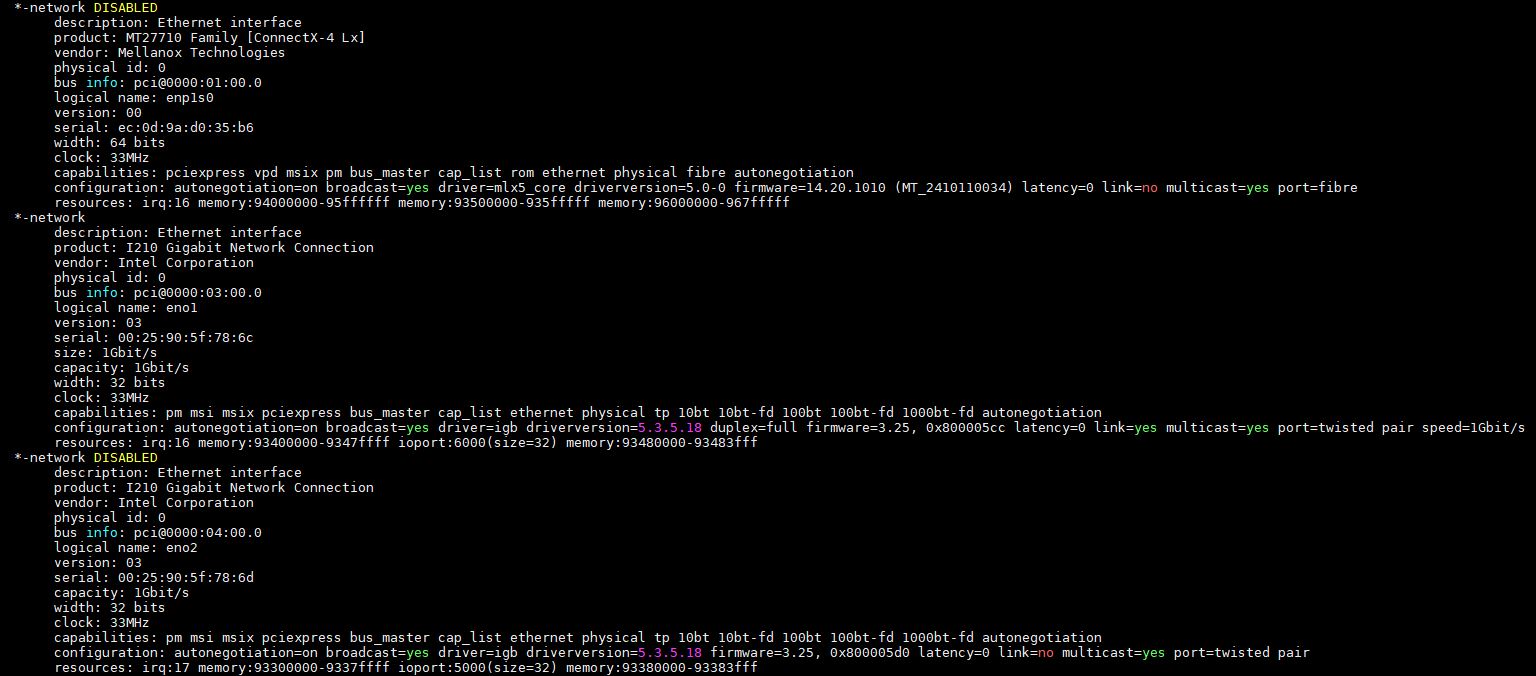
Inside the chassis, we find a Supermicro X11SCM-F motherboard. This mATX motherboard is from a line that has been popular for the company and around for generations (e.g. Supermicro X9SCM-F.)
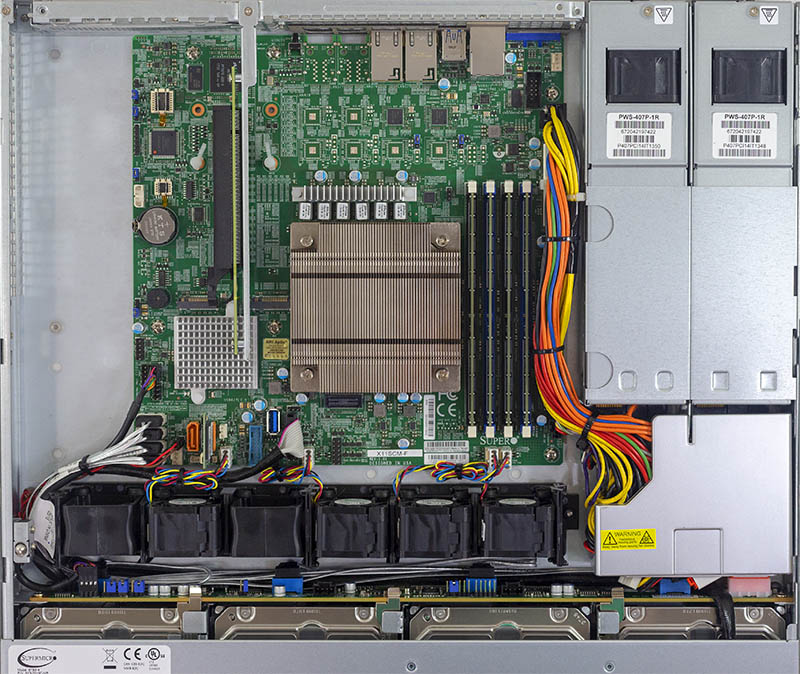
You can see the 1U fan partition blows cool air over the CPU heatsink and memory. The server itself supports various CPU options although we expect most will utilize Intel Xeon E-2100 or even a Core i3-8100 in this type of server. Flanking the CPU socket are four DDR4 slots. Currently, the server supports up to 64GB in 16GBx4 ECC UDIMMs. As the next-generation 32GB ECC UDIMMs roll out in 2019, these servers will be able to support up to 128GB of RAM.

For expansion, the primary option is a PCIe 3.0 x16 riser. This allows a full height card to be installed in the expansion slot.
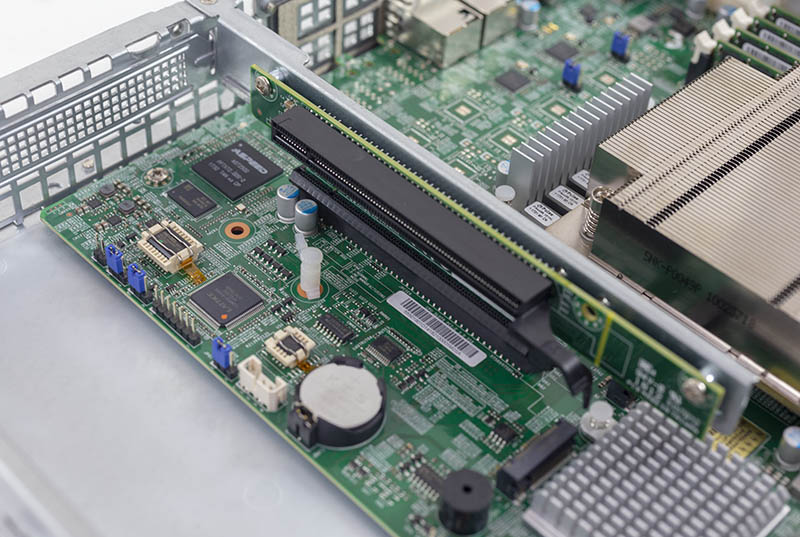
Here is the rear view. We did not have the Mellanox ConnectX-4 NIC installed when we took this picture, but this slot will be used for higher-speed networking if 1GbE is not fast enough for your deployment.
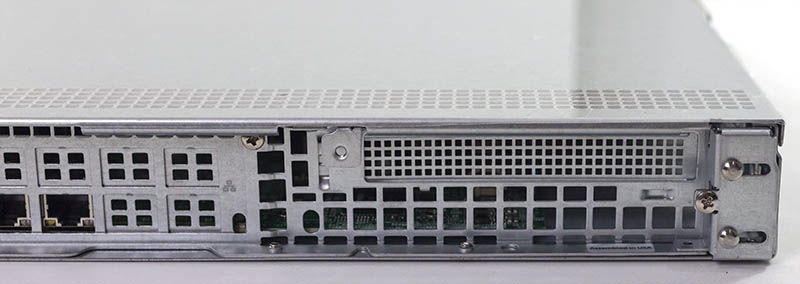
Peeling away the riser there are two M.2 slots. We love this feature. Supermicro has a tool-less installation method for M.2 drives which works well. The two drives can be used for a mirrored storage or cache drives as we have shown here. One can also use longer power loss protected M.2 22110 NVMe SSDs and/ or Intel Optane SSDs. These slots are also flexibel because one of them can be used for SATA SSDs as well.
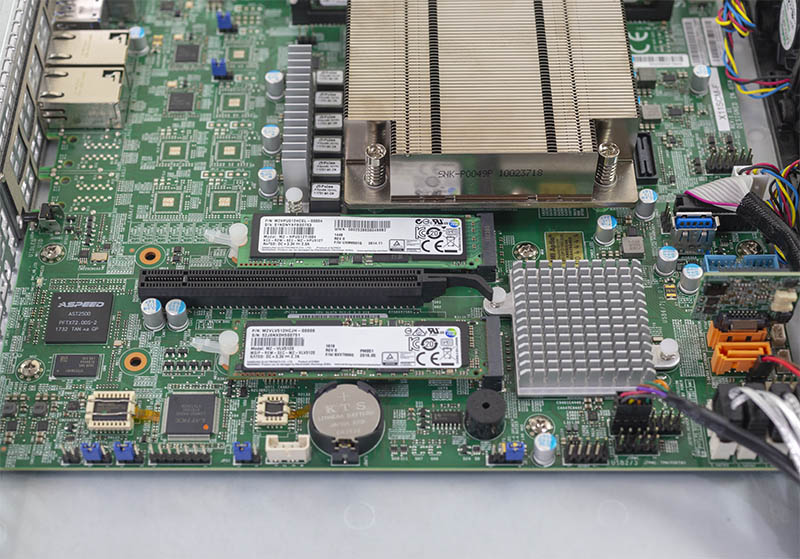
Aside from the four front 3.5″ hot-swap bays and dual M.2 drive slots, the system has two internal SATADOM headers and a USB 3.0 Type-A internal header. Without using the PCIe slot for storage, one can install four 3.5″ drives, two SATADOMs (a 128GB version installed below,) an internal USB 3.0 key, and two NVMe SSDs. That is absolutely stunning storage in this class of system and is enabled because Supermicro is using the higher end Intel C246 PCH.
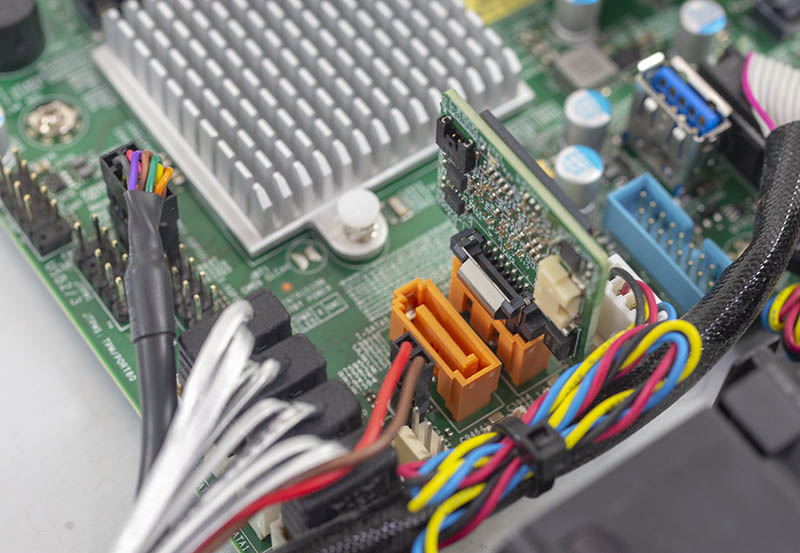
We added the air shroud and the Mellanox ConnectX-4 Lx PCIe card into the system to show that how well this high-end configuration works. Supermicro has enough airflow over the chipset, NVMe drives, and PCIe expansion cards in this configuration, but the chassis can add another fan just for add-on card cooling. Fans in the system are not the easily hot swap units found in the company’s higher-end and 2U and larger systems. Instead, they use short-run 4-pin power connectors so servicing them is easy and finding replacements will be simple as well.
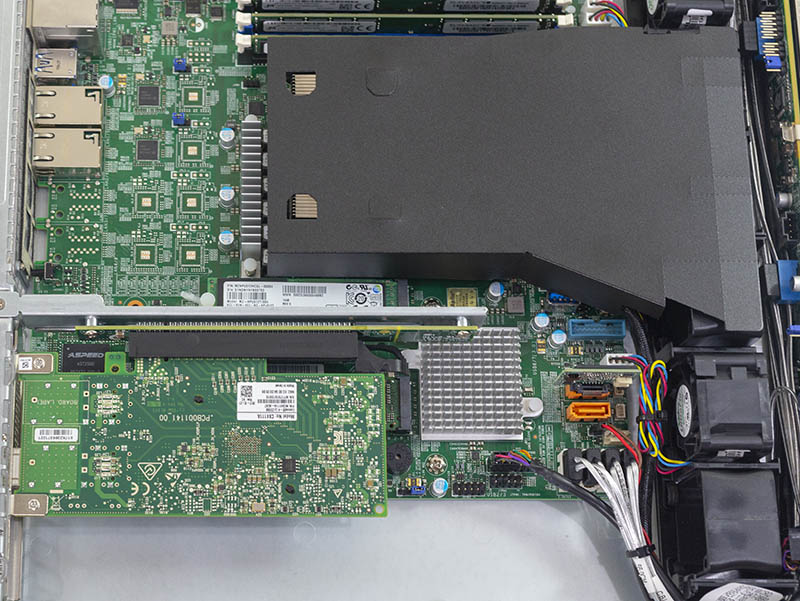
The redundant power supplies are 400W 80Plus Platinum efficiency units. This is a big deal in the space. For comparison, our recent HPE ProLiant DL20 Gen10 Review saw only an 80Plus Silver power supply installed. The Supermicro SYS-5019C-MR is a higher-end system than the DL20 Gen10, and this is a clear indicator. Power supply efficiency directly impacts total rack power consumption and TCO.
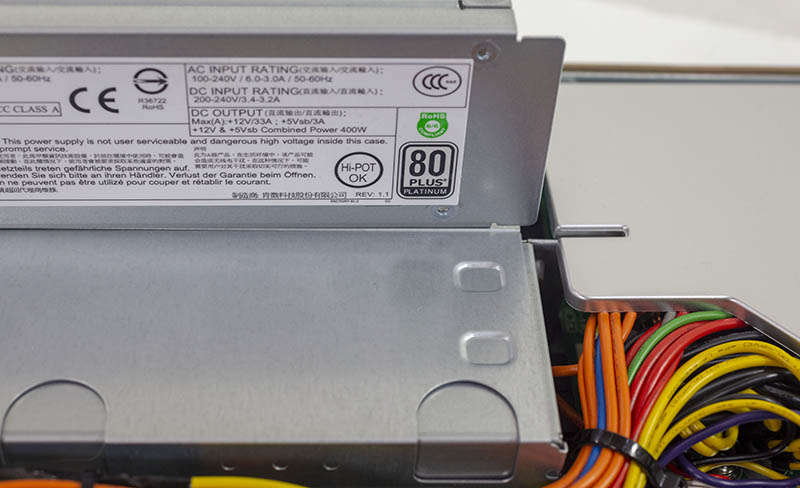
All told, this is just about the maximum one can put into a 1U Intel Xeon E-2100 series platform. Supermicro made excellent design choices to ensure the SYS-5019C-MR is a class leading product.
Supermicro SYS-5019C-MR Specs As Tested
We had a fairly standard configuration sent from Supermicro:
- Server: Supermicro SYS-5019C-MR
- CPU: Intel Xeon E-2186G (6 core/ 12 thread)
- Memory: 4x 16GB ECC UDIMMs
- Storage: 4x Seagate Exos 2TB 3.5″ 2x Samsung 512GB M.2 NVMe SSDs, 128GB Supermicro SATA DOM
- PCIe Networking: Mellanox ConnectX-4 Lx
- Power Supply Configuration: Redundant 400W
These types of servers are often ordered with single DIMMs for cost-sensitive segments of the market. Our configurations with 4x 16GB DIMMs are being used to match the higher-end CPU. We also cycled several CPUs through to get performance figures at different ends of the market. Given that we pushed our normal timetable to get this review completed for launch, we ran through only a few of the 6 core options.

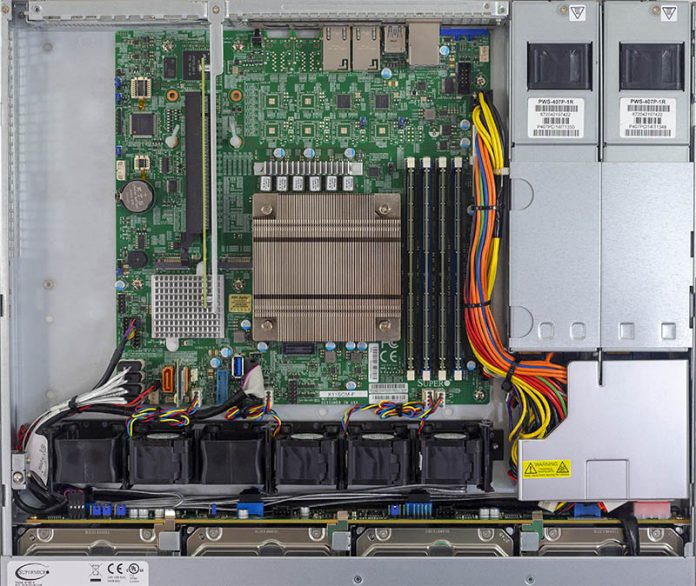



Patrick, How important it is for a SOHO server to use the larger 22110 drives like P4511 instead or e.g standard Samsung’s EVO 870. The price difference per drive is about 300€ in EU e.g P4511 is about 800€ and EVO 520€. The machine does have an UPS
wow a 9.6! must be really exceptional! was expecting a 9.4 or 9.5!
Can you publish the price of the server as configured?
And is it possible to add the noise levels to your reviews?
Hi Stijn, we will do that for some of the pedestal/ tower servers. For rackmount units meant for a data center we do not do this.
OK, this is a long shot, and it’s actually what I thought this review was originally going to be about… I’ve been out of the loop for the last several months due to a career change. I was expecting this machine to be a powerful, rack-mounted _workstation_, if such a concept even makes sense or there is a market for it.
As a fan of Supermicro, this is something I would love to see one day in the future. Do you know if anything like this is on the cards? There are exciting workstations appearing in Supermicro’s catalogs recently, and I thought this might be one of those. What do you think about this, in general?
Hi Patrick, thanks for the in-depth review! Just have a question on the storage: it says in your article “The two drives can be used for a mirrored storage or …” Do you have any hint how to configure it? Thanks!